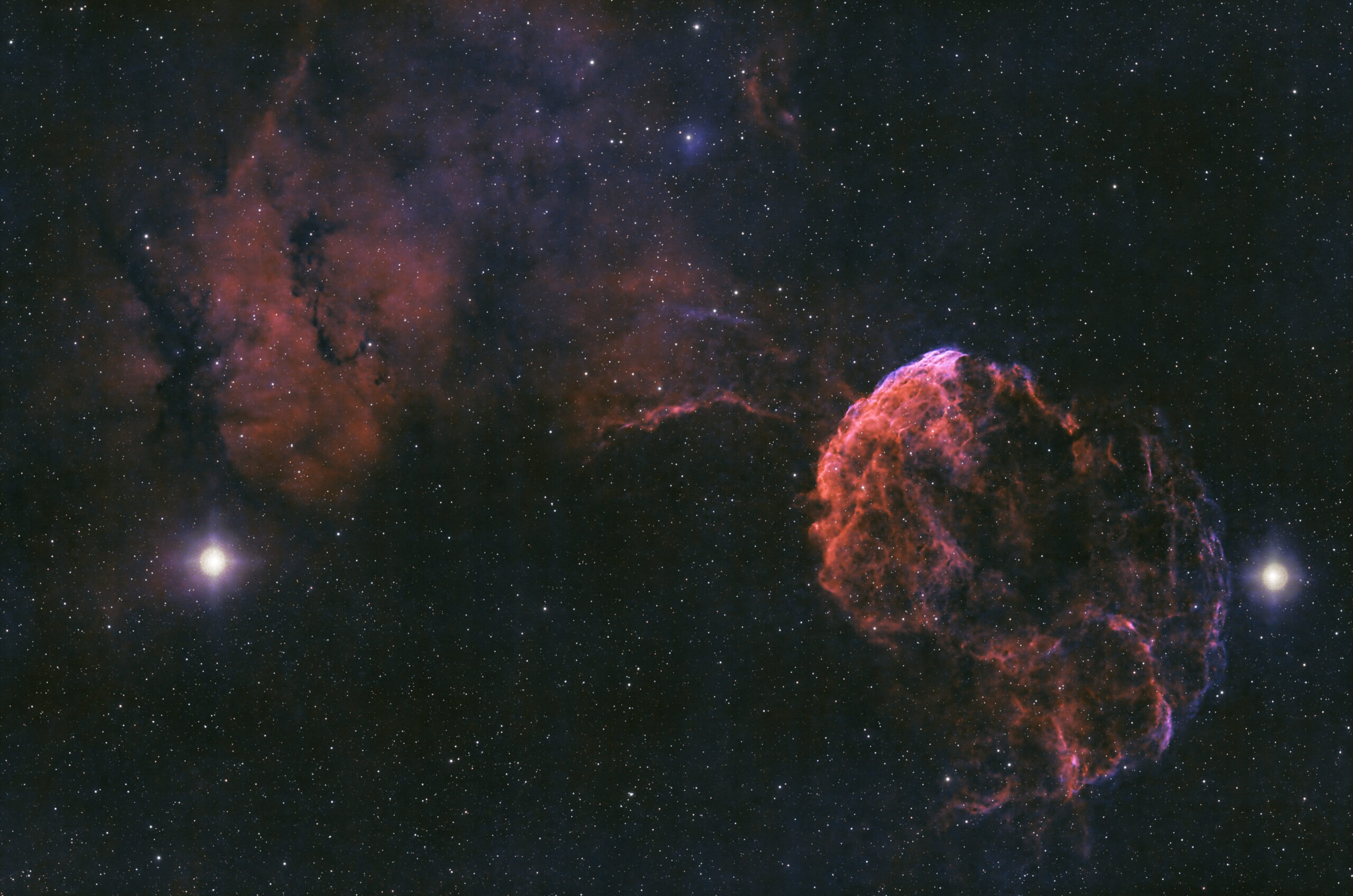The Jellyfish Nebula, having an official designation of IC443, is a supernova remnant about 5,000 lightyears from Earth that occurred between 3,000 and 30,000 years ago.
I captured this image from my light-polluted Bortle 6 backyard in San Ramon, California.
Equipment:
- Telescope: SkyWatcher ESPRIT 100ED
- Imaging Camera: QHY-268C
- Guide Scope: PrimaLuceLab 60mm
- Guide Camera: ZWO ASI2900MM
- Mount: SkyWatcher EQ66-R Pro
- Electronic Focuser: PrimaLuceLabs SESTO SENSO 2
- Filter: Optolong L-Extreme dual-band astronomy narrow-band filter (Hb, Ha, and OIII)
- Capturing Software: N.I.N.A.
How much data did I capture?
Exposure Time: 2.8 hours
What about image processing?
There is still a lot of trial and error when processing this data captured with the Optolong L-eXtreme dual-band filter that only passes Ha and OIII emission lines. I am producing a HOO image where Red, Green, and Blue are mapped to Ha, OIII, and OIII, respectively, hence the ‘HOO’ color palette.
A challenging part of processing this image, which I failed to solve, was the large halos around the two bright stars close to this nebula. The Optolong L-eXtreme filter I used causes these imaging artifacts due to the light from these very bright stars bouncing off the astrophotography camera sensors glass, to the filter, and back to the sensor again. I tried various ways of removing this but was relatively unsuccessful. Something I need to work on in future imaging sessions.

